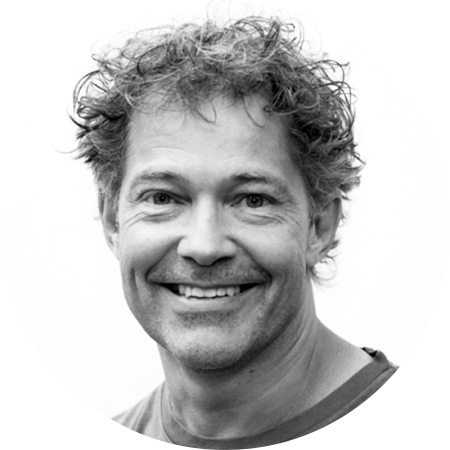Professional Listening

The popular English expression “acquired taste” characterises the way most sensing occurs after we reach the age of two, and later in life, we are so influenced by prior experience that unbiased judgment is no longer possible. Perceptual bandwidth, the speed by which we are able to sense, reduces during childhood. So as adults, we largely hear what we expect to hear and see what we expect to see. Sensory reach-out mechanisms are primarily used to probe the environment just enough to reassure ourselves that the outside world is going according to plan.
Great listeners have learned to live with those basic limitations of being human, and still make coherent judgments, by getting time on their side. We cannot evaluate a multitude of variables both accurately and quickly, but we can keep most of them constant and pre-checked, then use acquired reach-out skills to gauge the one or two in question. Active reach-out components of listening include substantial efferent pathways of the auditory nervous system (i.e. nerve fibers that carry signals away from the brain to our bodies) and lead to the brain's ability to tune the middle and inner ears in realtime over a range of 80 dB; and overt behaviours such as head and body movement. Like when learning a language, studies indicate that listening-training should ideally start at a young age. It is never too late, though learning takes longer as we age.
Excellent mastering engineers know their room and equipment intimately, they work at defined listening levels and are aware of taking breaks before fatigue becomes a factor. This creates an ideal setting for evaluating content systematically but, it may well have taken years to get there. A subjective evaluation of equipment also takes either plenty of time; or an introduction to the device under test in a well-known environment, acoustically and electrically.
Reference Monitoring
Besides evident requirements like a flat on-axis frequency response of direct sound, 60 degree stereo listening angle etc., professional monitoring standards don’t take into account the latest understanding of perception, or stress the importance of “slow listening”.
In general, our senses focus on agents and disregard scenery; and loudspeakers are a substitute for agents. Unless the room is anechoic, or the distance between loudspeaker and listener is very short, we hear a combination of direct sound and reflections; so the way a loudspeaker excites a room potentially has an influence on the reproduction experience. Our senses are remarkable at picking up patterns, for instance the directivity of a natural source. Therefore, a loudspeaker must avoid imposing systematic patterns, especially onto a composite source.
Professional listening standards tend to treat directivity in monitors carelessly, and manufacturers consequently do little to prevent “Christmas-tree” dispersion, which is the result of just combining drivers in a traditional multiway design. The woofer becomes more directive with frequency and the mid range repeats that pattern before a tweeter adds the upper branches, as in the illustration. Soft domes become ring radiators in the upper octaves and therefore highly directive. With such loudspeakers, the room needs to be massively treated with absorption and/or diffusion to mitigate their random performance.

Directivity trend (horizontally and vertically) in most 3-way loudspeakers and monitors.
Considering home reproduction, where listening often takes place beyond the critical distance, only a few companies have systematically studied loudspeaker directivity and in-room compensation of frequency response. Such research could be combined with updated sensory understandings and new, ideal monitor designs, to more accurately test and define “neutral” baseline reproduction in professional standards.
If we are presented with unmistakable direct sound, holding also with movement, perception locks on to that (the agent) and tends to disregard reflections (scenery). However, when multiway loudspeakers with displaced drivers are used for reproduction, direct sound becomes ambiguous with movement, and reflections are always coloured. An ideal point source monitor, in contrast, gets rid of such unwanted distortion. It promotes direct sound as well as coherent reflections, and should therefore be the foundation for new systematic studies of neutral reproduction and of frequency response compensation in pro monitoring.
Genelec 8351
By the time I joined Genelec in 2015, coaxial designs had already been under consideration for 20 odd years and the 8351 monitor had just been introduced. Previously, we were using a variety of fine loudspeakers for test and development but the 8351 was strikingly different, at close range and at a distance. Four years later we have become more accustomed to its excellence and now tend to simply regard it as more natural and ‘relevant’ in monitoring terms.
This year, as the new 8351B was taking shape, and we improved performance in such areas as phase linearity, frequency response and distortion, it all came out as only a moderate increment – compared to first hearing the A version, which combined a diffraction-free point source with controlled directivity in both planes. That was the bigger leap, though of course the extra precision and higher headroom of the 8351B does give it a further nudge-up.
In conclusion, 8351 and the entire Ones family of extraordinary point source designs will enable the raising of professional monitoring standards, and help expert listeners hone their active sensory skills to create even finer recordings and mixes.
*Lund & Mäkivirta, ”On Human Perceptual Bandwidth and Slow Listening”, AES reviewed paper for Tonmeistertagung, Cologne (2018).
About the Author

Thomas is one of the fathers of the loudness and peak-level measurement standards used widely from music production over streaming and broadcast to OTT. Perception has been at the centre of his professional life, working first as a physician and then in pro audio research. Thomas has written a number of papers; he is senior technologist at Genelec, and is the convenor of an EU expert group tasked with the prevention of recreational hearing loss.
